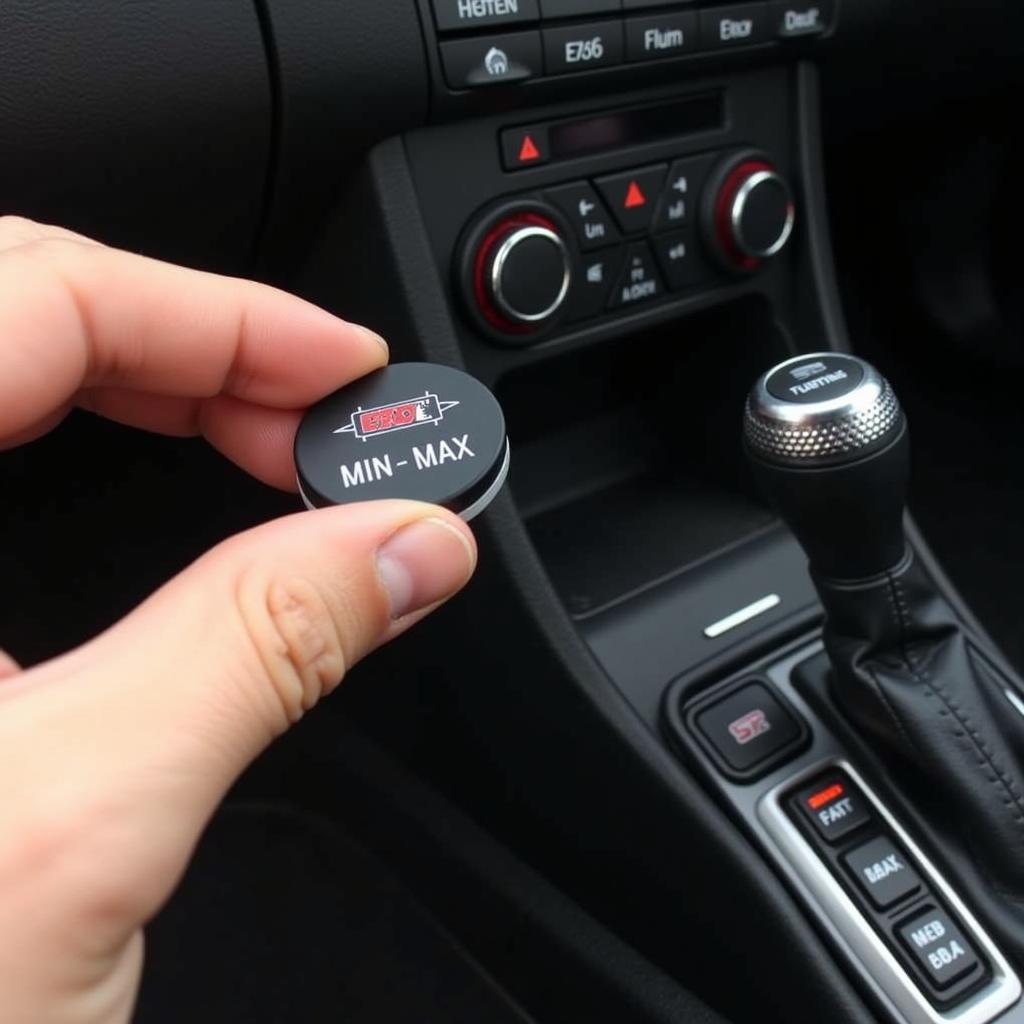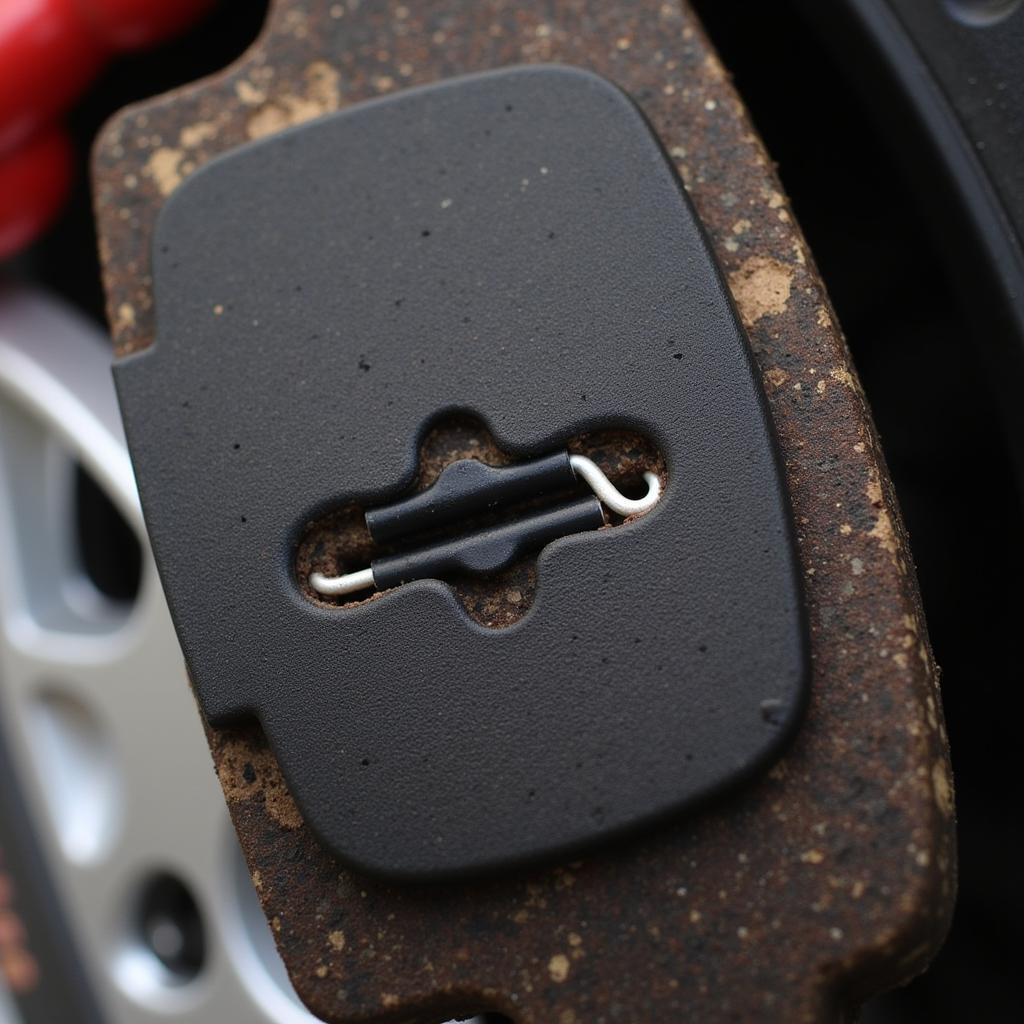The brake warning light on your Seat Ibiza’s dashboard is a crucial safety feature. When illuminated, it signals a potential issue with your braking system that requires immediate attention. Ignoring this warning light could lead to brake failure and a serious accident. This comprehensive guide will explore the common causes of a Seat Ibiza brake warning light and provide potential solutions to help you address the issue effectively.
Understanding Your Seat Ibiza’s Brake Warning Light
The brake warning light is designed to alert you to several potential problems, not just a single issue. Here are the most common reasons why your Seat Ibiza’s brake warning light might be on:
- Low Brake Fluid Level: One of the most frequent causes is a low brake fluid level. Brake fluid is the lifeblood of your braking system, transmitting force from the brake pedal to the wheels. A leak in the system can lead to a dangerous drop in brake fluid.
- Worn Brake Pads: Your Seat Ibiza’s brake pads are designed to wear down over time. When they become too thin, a sensor triggers the brake warning light to indicate it’s time for a replacement.
- Faulty Brake Pad Sensor: Sometimes, the brake pad sensor itself can malfunction, triggering the warning light even if your brake pads are still in good condition.
- ABS Issues: Your Anti-lock Braking System (ABS) is crucial for preventing wheel lockup during hard braking. If the ABS system experiences a problem, the brake warning light might illuminate alongside the ABS warning light.
- Master Cylinder Failure: The master cylinder plays a critical role in distributing brake fluid pressure. A failing master cylinder can cause various braking problems, including a lit warning light.
Diagnosing the Problem
Determining the exact cause of the brake warning light requires some investigation. Here’s a step-by-step guide:
-
Check Your Brake Fluid Level:
- Locate the brake fluid reservoir under the hood of your Seat Ibiza.
- The reservoir will have a “Min” and “Max” marking on the side.
- If the fluid level is below the “Min” mark, add the correct type of brake fluid specified in your owner’s manual.
- If the fluid level is significantly low or drops quickly after refilling, suspect a leak and seek professional help immediately.
-
Inspect Your Brake Pads:
- If your brake fluid level is normal, the next step is to check your brake pads.
- You can often visually inspect the brake pads through the spaces between the wheel spokes.
- Look for significant wear on the pads. If they appear thin or worn down, they likely need replacing.
-
Consider Other Warning Lights:
- Pay close attention to any other warning lights illuminated on your dashboard alongside the brake warning light.
- For example, an illuminated ABS warning light suggests a problem with your anti-lock braking system.
What to Do When the Brake Warning Light Comes On
If your Seat Ibiza’s brake warning light comes on, it’s crucial to:
- Stay Calm: Don’t panic. Pull over to a safe location as soon as possible.
- Assess the Situation: Check the other warning lights and try to determine the potential cause based on the information provided above.
- Take Action: If you suspect a leak or a serious issue, do not attempt to drive further. Call a tow truck and have your car transported to a trusted mechanic or dealership.
 Towing a Seat Ibiza with Brake Warning Light
Towing a Seat Ibiza with Brake Warning Light
Remote Diagnostics and Programming for Seat Ibiza Brake Issues
Advancements in automotive technology have paved the way for remote diagnostics and programming. This means skilled technicians can often diagnose and even resolve certain brake system issues remotely without the need for a physical visit.
- How it Works: By connecting your Seat Ibiza to a specialized diagnostic tool, technicians can remotely access your vehicle’s computer system, read error codes, and assess the health of various components, including those related to the braking system.
- Benefits of Remote Diagnostics: Remote diagnostics offer convenience and can often save you time and money compared to traditional garage visits.
If you’re experiencing brake warning light issues with your Seat Ibiza, consider seeking assistance from a reputable remote diagnostics service provider. They can help you determine the root cause of the problem and recommend the best course of action.
Preventing Future Brake Warning Light Issues
Maintaining a healthy braking system is key to preventing future brake warning light issues. Here are some preventative maintenance tips:
- Regular Brake Fluid Checks: Get your brake fluid levels checked at least twice a year or as recommended in your Seat Ibiza’s owner’s manual.
- Timely Brake Pad Replacements: Don’t wait for your brake pads to wear down completely. Replace them according to the manufacturer’s recommendations or sooner if you notice signs of wear.
- Brake Fluid Flushes: Have your brake fluid flushed and replaced every 2-3 years or as recommended by your mechanic.
- Pay Attention to Warning Signs: Be aware of any unusual noises, vibrations, or changes in brake pedal feel while driving. Address these issues promptly.
 Checking Brake Fluid Level on a Seat Ibiza
Checking Brake Fluid Level on a Seat Ibiza
Conclusion
The brake warning light on your Seat Ibiza should never be ignored. Understanding the potential causes and solutions for this warning light can help you address the issue promptly and ensure your safety on the road. If you’re unsure about any aspect of your vehicle’s braking system, consult a qualified mechanic for a thorough inspection and repair. Remember, timely maintenance and a proactive approach to car care are essential for safe and enjoyable driving.

